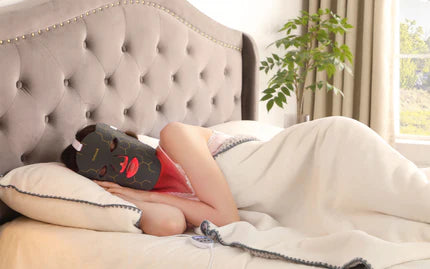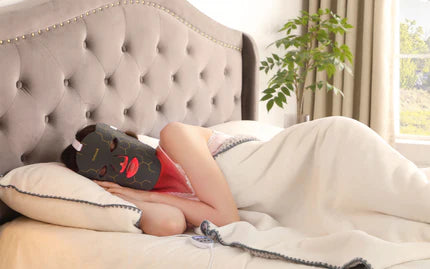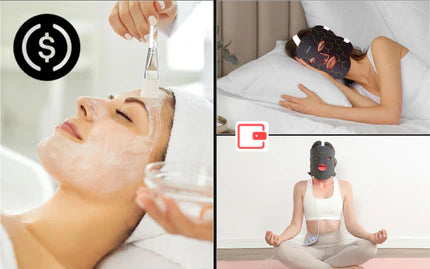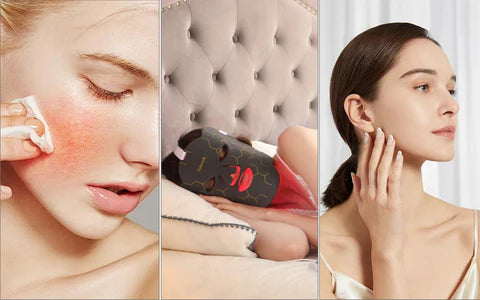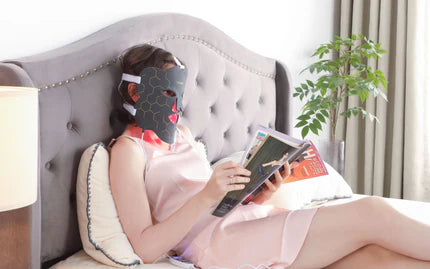Everybody needs good sleep, but the 'z's hard to come by. Today, let's discuss a new treatment modality using red light which may make sleeping easier. First, we are going to talk about what it is to get really good sleep and why that is super important in feeling great. Then we will describe, in very simple terms, what red light therapy is and what it does. Next, we'll talk in detail about why all this red light business is thought to help you fall asleep faster and sleep more soundly.
It has something to do with your body's sleeping pattern-a circadian rhythm—and with the production of a sleepy-time hormone called melatonin. Then, we share some easy ways you can try this red light therapy in your own home.
What is Sleep Quality?
What is Sleep Quality?
Sleep quality, in simple words, is about how well a person can sleep. It doesn't just revolve around how many hours are spent in bed but a few major things:
- How long does it take you to fall asleep? It should take no longer than 20 minutes.
- Do you stay asleep all night, or do you wake up much?
- How do you feel upon waking up in the morning—refreshed or further sleepy?
- Are you going through the right stages of sleep? There are deep sleep times and REM (when you dream) that help your brain and body recharge.
Good sleep means checking these boxes: falling asleep fairly quickly, staying asleep pretty well, feeling rested in the morning, and getting enough deep and dreamy REM (rapid eye movement) sleep.

Why Good Sleep Matters
Good sleep is crucial for your health:
- It allows your brain to process information, create memories, and make decisions.
- Your body repairs itself and builds strength while you sleep.
- A strong immune system, which fights off illnesses, depends on good sleep.
- Hormones that control hunger, growth, and stress are regulated during sleep.
- Good sleep supports your heart's health and can help maintain a stable mood.
- Sleeping well might also reduce the risk of developing chronic health issues.
The Science Behind Red Light Therapy and Sleep
Melatonin is a hormone that your body makes when it gets dark, and it helps you feel ready to sleep at night. This hormone is key for keeping your sleep-wake cycle, also known as your sleep-wake rhythm, on track. The trouble comes when bright lights in the evening, especially the blue light from screens like phones and televisions, interrupt your body's melatonin production. When this happens, you might find it tough to fall asleep.
Red light is a good choice for nighttime because it doesn't mess with your body's internal clock. Studies suggest that red light can make your sleep better and boost the production of melatonin, the hormone that helps you sleep. Using red light while you sleep and when you wake up might help cut down on grogginess in the morning. But, it's important to keep the brightness in check, as too much red light can actually lower the amount of melatonin your body makes.
Benefits of Red Light Therapy for Sleep
Reducing Sleep Latency
Sleep latency is just a fancy term for how long it takes you to go from being fully awake to sleeping. If you're spending too much time tossing and turning before you actually fall asleep, red light therapy might be able to help. By calming your body and signaling that it's time to wind down, red light has been found to potentially reduce the time it takes for you to start snoozing. So instead of staring at the ceiling, you could be drifting off to dreamland more quickly.
Enhancing Sleep Quality
But getting to sleep faster isn't the only potential benefit; red light therapy may also make the sleep you get more restful and restorative. By improving your overall sleep quality, red light therapy can help ensure you spend the right amount of time in deep sleep stages, and help regulate circadian rhythms which are crucial for physical recovery and cognitive function. With better sleep quality, you wake up feeling more refreshed and alert.
Alleviating Sleep Disorders
Many people suffer from sleep disorders like insomnia or interrupted sleep patterns. While red light therapy isn't a cure-all, some studies suggest that it might provide relief for those struggling with these issues. By helping to regulate sleep-related hormones and reinforce natural sleep-wake cycles, red light therapy could offer a non-invasive, drug-free way to address certain sleep disorders. As always, if you’re experiencing sleep problems, it’s important to consult with a healthcare provider for a comprehensive treatment plan.

Practical Applications of Red Light Therapy
How to Use Red Light Therapy for Better Sleep
Using red light therapy to improve sleep is quite straightforward. Here are some steps you can follow:
- Timing: Aim to use red light therapy in the evening, especially as part of your winding-down routine before bed. This can help signal to your body that it's time to sleep.
- Environment: Create a relaxing environment. You might use red light therapy while reading a book or meditating to enhance its effects.
- Duration: Sessions usually last between 10 to 20 minutes, but it’s important to follow the guidelines provided with your specific device.
- Consistency: Make it a regular part of your routine. Consistent use over time is key to seeing any benefits.
- Safety: Always read the instructions carefully to make sure you're using the device safely. For example, most devices recommend keeping your eyes closed if you're using lights on your face.
What Devices and Settings Should You Use for Red Light Therapy?
There’s a variety of red light therapy devices available, from handheld units and wearable gadgets to full-body panels and beds. When choosing a device, consider:
- Intensity: Look for devices with an irradiance level sufficient to penetrate the skin and reach the cells beneath.
- Wavelength: The most effective wavelengths for sleep tend to fall within the range of 600–850 nanometers.
- Size: Choose a size appropriate for your needs – a larger panel or bed might be more convenient for full-body benefits, while a smaller device like a red light therapy mask could be adequate for targeted areas.
- Quality: Opt for devices from reputable manufacturers with good reviews and, if possible, backed by scientific research.
As for settings, start with what's recommended by the manufacturer and adjust according to your comfort and response to the therapy. More isn't always better; stick to recommended durations and frequencies.
Above all, while red light therapy devices are generally considered safe, it's wise to consult with your healthcare provider before starting new treatments, particularly if you have pre-existing conditions or concerns.

FAQs on Red Light Therapy
Q1: Can red light therapy replace my current sleep medication?
No, red light therapy should never be used in replacement of any prescription medication. It may complement your existing sleep practices but always consult with a healthcare provider before making any changes to your medication regimen.
Q2: Will red light therapy interfere with other treatments I'm undergoing for sleep issues?
Red light therapy is normally non-invasive and hence has very minimal associated side effects, but it's always great to talk through new treatments with your healthcare provider, especially if you're already receiving some other kind of therapy for sleeping.
Q3: Are there any side effects of using red light therapy?
Generally low-risk, but as with anything, a couple of possible side effects include eye strain or headache if the eyes are not protected when they should be. Always follow the instructions on the device.
Q4: What happens if I miss a session of red light therapy – will it affect my progress?
The chances are that you will not be affected a lot by missing one session, but the success of continuity brings about long-term benefits; however, if there is an inconsistency now and then, it shall not take away the effectiveness of frequent use.
Try Red Light Therapy for Better Sleep
Among simple solutions for improving sleep, red light therapy is one of the most evident options. It may not be an overnight fix, but the possible benefits it can have by helping one fall asleep faster and improving sleep quality are good enough to give it a try.
Again, it will be very prudent to consult with your healthcare provider before seeking any other new therapy, as it'll be important to ensure such treatment fits your health needs. Red light therapy could be a practical addition to nightly routines if better sleep is in order.
